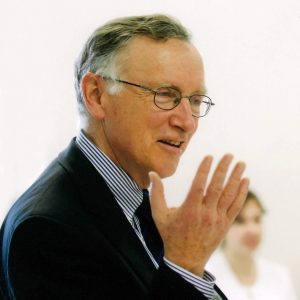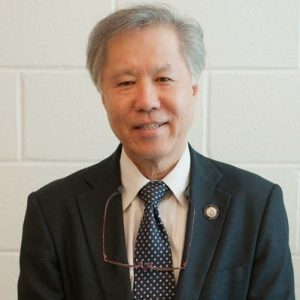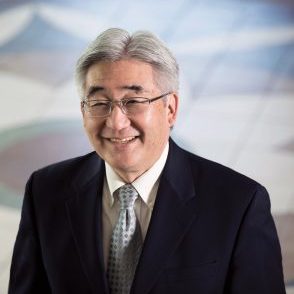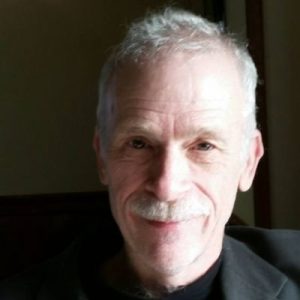
DATE
Wed, December 16, 2020
TIME
5:00 PM (PST)
This online panel, as the first of a two-part series, is sponsored by UBC’s Robert H. N. Ho Family Foundation Program in Buddhism and Contemporary Society (何鴻毅家族基金佛學與當代社會課程) and the International Association of Shin Buddhist Studies (IASBS).
The Robert H. N. Ho Family Foundation Program in Buddhism and Contemporary Society is delighted to host our virtual annual symposium entitled:
“Other Power” in Indian, Chinese, Korean and Japanese Buddhism:
Its Nature and Role in Buddhist Awakening
About this event
The doctrine of “Other Power” continues to perplex many Buddhists and Buddhist scholars, who consider it antithetical to the foundational Buddhist spirit of self-cultivation. For many, it even reminds them of “grace” in Christianity. Further, it is often seen to be a teaching exclusive to Pure Land Buddhism, especially among disciples of the 12th century Pure Land master, Honen. However, if we define Other Power as the “spiritual working or power for the seeking self,” it is found widely throughout the development of Mahayana thought from India to Central Asia and to East Asia. The five panelists will explore the nature and role of Other Power in this first of two panels — the second panel will be held in 2021 and focus on Shinran’s understanding of Other Power.
Panelists
David Eckel, Boston University
“The Logic of Other-Power in the Philosophy of the Indian Mahāyāna”
 Normally Indian Buddhist philosophers like Bhāviveka, Candrakīrti, and Śāntideva would seem unlikely places to look for the ideas that animated the traditions of Other-Power in the rest of the Mahāyāna. After all, they seem to rely almost exclusively on their own powers of rational investigation. But the works of these philosophers are deeply infused by patterns of thought that under-girded the practice of devotion to Buddhas and bodhisattvas in East Asia. This paper will focus particularly on the concept of the “previous vow” (pūrva-praṇidhāna) in Indian accounts of the bodhisattva path and explore its relationship to the underlying concept of Emptiness.”
Normally Indian Buddhist philosophers like Bhāviveka, Candrakīrti, and Śāntideva would seem unlikely places to look for the ideas that animated the traditions of Other-Power in the rest of the Mahāyāna. After all, they seem to rely almost exclusively on their own powers of rational investigation. But the works of these philosophers are deeply infused by patterns of thought that under-girded the practice of devotion to Buddhas and bodhisattvas in East Asia. This paper will focus particularly on the concept of the “previous vow” (pūrva-praṇidhāna) in Indian accounts of the bodhisattva path and explore its relationship to the underlying concept of Emptiness.”
Kenneth K. Tanaka, Musashino University
“The Other Power in Indian Tathagatagarbha Thought: Reassessing the Dichotomy Drawn between Other Power and ‘Buddha Nature’”
 Tathāgatagarbha thought is known for its teaching of “Sentient beings possessing Tathāgata nature within,” which in East Asian Buddhism came to be articulated as “Buddha nature.” This teaching emphasizes the potentiality within each sentient beings is often portrayed as being in opposition to Other Power, which is regarded to lie external to sentient beings. However, it turns out the teaching of “Tathāgata nature within” (or Buddha nature) has a much more nuanced relationship with the teaching of Dharmakāya, Buddhatā, or Tathatā, which is none other than what we are calling, the “Other Power dimension.” This paper examines this relationship as discussed in Ratnagotravibhāga Mahāyanottaraśāstram, or “An Analysis of the Nature of the Three Jewels Being a Treatise on the Ultimate Doctrine of the Great Vehicle” (C. Jiujing yisheng baoxing lun 究竟一乗寶性論), a representative Tathāgatagarbha treatise from the 5th century authored by Sāramati.
Tathāgatagarbha thought is known for its teaching of “Sentient beings possessing Tathāgata nature within,” which in East Asian Buddhism came to be articulated as “Buddha nature.” This teaching emphasizes the potentiality within each sentient beings is often portrayed as being in opposition to Other Power, which is regarded to lie external to sentient beings. However, it turns out the teaching of “Tathāgata nature within” (or Buddha nature) has a much more nuanced relationship with the teaching of Dharmakāya, Buddhatā, or Tathatā, which is none other than what we are calling, the “Other Power dimension.” This paper examines this relationship as discussed in Ratnagotravibhāga Mahāyanottaraśāstram, or “An Analysis of the Nature of the Three Jewels Being a Treatise on the Ultimate Doctrine of the Great Vehicle” (C. Jiujing yisheng baoxing lun 究竟一乗寶性論), a representative Tathāgatagarbha treatise from the 5th century authored by Sāramati.
David Matsumoto, Institute of Buddhist Studies, Graduate Theological Union
“Merit and Faith: the Transitional Nature of Tanluan’s Approach to Other Power”
 Although he was not esteemed as a formative patriarch of Chinese Pure Land Buddhism, like Huiyuan (334-416), by his contemporaries, Tanluan (476-542) would later be revered as a Chinese master by Pure Land Buddhists in Japan. Shinran (1173-1263) drew heavily on Tanluan’s Pure Land thought. Moreover, Shin sectarian scholarship has traditionally viewed Tanluan through the lens of Shinran, holding that Tanluan’s Other Power teaching is in every way identical with the later formulations of Shinran. However, a close reading of Tanluan’s Commentary on a Pure Land Discourse (attributed to Vasubandhu) suggests that Tanluan’s presentation of Other Power represents, as it were, a transitional reformulation of Pure Land practice. Even while Tanluan reflects on dharma-bodies and adorned manifestations of Amida’s Pure Land, his text is less a study of the ontology of enlightenment than it is a careful consideration of the efficacy and implications of a particular system of Pure Land practice set out in the Discourse. It might be said that Tanluan’s treatment of Vasubandhu’s Discourse represents a transitional attempt to formulate a system of praxis grounded on merit and faith within a framework of Pure Land soteriology.
Although he was not esteemed as a formative patriarch of Chinese Pure Land Buddhism, like Huiyuan (334-416), by his contemporaries, Tanluan (476-542) would later be revered as a Chinese master by Pure Land Buddhists in Japan. Shinran (1173-1263) drew heavily on Tanluan’s Pure Land thought. Moreover, Shin sectarian scholarship has traditionally viewed Tanluan through the lens of Shinran, holding that Tanluan’s Other Power teaching is in every way identical with the later formulations of Shinran. However, a close reading of Tanluan’s Commentary on a Pure Land Discourse (attributed to Vasubandhu) suggests that Tanluan’s presentation of Other Power represents, as it were, a transitional reformulation of Pure Land practice. Even while Tanluan reflects on dharma-bodies and adorned manifestations of Amida’s Pure Land, his text is less a study of the ontology of enlightenment than it is a careful consideration of the efficacy and implications of a particular system of Pure Land practice set out in the Discourse. It might be said that Tanluan’s treatment of Vasubandhu’s Discourse represents a transitional attempt to formulate a system of praxis grounded on merit and faith within a framework of Pure Land soteriology.
A. Charles Muller, Musashino University
“A Korean Seon Master’s Views on “Other Power”: The Case of Jinul 知訥 (1158–1210)”
 While Korean Buddhism never developed a distinct Pure Land tradition analogous to the Japanese Jōdo-shū or Jōdoshin-shū, Korean Buddhists were well aware of, and frequently discussed issues of other-power and the Pure Land. The case of Wonhyo is often the first cited, as he is reputed to have given up his scholarly work late in life in order to travel around the countryside, teaching people how to recite the yeombul (nenbutsu), and he also wrote influential commentaries on the Pure Land sutras. But the issue of other-power is also discussed in the works of various Cheontae and Seon scholars over the centuries. One notable example is the case of the famous Goryeo-period Seon master Jinul 知訥 (1158–1210), who, as a Seon 禪 teacher, felt obliged to address the relevance of the other-power approach vis-à-vis the standard Seon self-power methods. Jinul wrote about other-power in a concentrated way at least two times: Once in his earlier work, Encouragement to Practice: The Compact of the Samādhi and Prajñā Society (Gwonsu jeonghye gyeolsa mun 勸修定慧結社文, and once in a late-career text, Essentials of Reciting the Name of the Buddha (Yeombul yomun 念佛要門). In his earlier work, he tends to downplay the merits of the Pure Land approach, but in his later work, he seems to take it more seriously. We will look at critical passages from both texts.
While Korean Buddhism never developed a distinct Pure Land tradition analogous to the Japanese Jōdo-shū or Jōdoshin-shū, Korean Buddhists were well aware of, and frequently discussed issues of other-power and the Pure Land. The case of Wonhyo is often the first cited, as he is reputed to have given up his scholarly work late in life in order to travel around the countryside, teaching people how to recite the yeombul (nenbutsu), and he also wrote influential commentaries on the Pure Land sutras. But the issue of other-power is also discussed in the works of various Cheontae and Seon scholars over the centuries. One notable example is the case of the famous Goryeo-period Seon master Jinul 知訥 (1158–1210), who, as a Seon 禪 teacher, felt obliged to address the relevance of the other-power approach vis-à-vis the standard Seon self-power methods. Jinul wrote about other-power in a concentrated way at least two times: Once in his earlier work, Encouragement to Practice: The Compact of the Samādhi and Prajñā Society (Gwonsu jeonghye gyeolsa mun 勸修定慧結社文, and once in a late-career text, Essentials of Reciting the Name of the Buddha (Yeombul yomun 念佛要門). In his earlier work, he tends to downplay the merits of the Pure Land approach, but in his later work, he seems to take it more seriously. We will look at critical passages from both texts.
Mark Blum, University of California, Berkeley
“Conceptions of Other-Power in Japan”
 Although it has roots in Chinese translations of Indic Buddhist materials with a variety of meanings, the usage of the term “other-power” (tariki) in Japan becomes a technical term in reference to the supernormal powers of buddhas and bodhisattvas used to mark notions of faith, merit, and access to apotropaic power prior to the thirteenth century follows Hōnen (1133-1212) when the term appears as both noun and adjective in critical writings among Hōnen’s disciples in their varying analyses of his thought. This paper will trace the use of various forms of the “language of exalted power” prior to Hōnen, always expressed as nouns, and then offer a summary of the adjectival usage of “other power” used to apply notions of power in what I call “a hermeneutic of praxis” that begins with Hōnen and markedly heats up throughout the thirteenth and fourteenth centuries. I mainly focus on the mental state of the practitioner dedicated to nenbutsu practice, wherein other-power changes are contrasted with “self-power”. From the thirteenth century onwards, it also references notions of orthodoxy and orthopoxy, a change that begins in the generation that becomes a pejorative label marking heterodox views or a simple lack of faith.
Although it has roots in Chinese translations of Indic Buddhist materials with a variety of meanings, the usage of the term “other-power” (tariki) in Japan becomes a technical term in reference to the supernormal powers of buddhas and bodhisattvas used to mark notions of faith, merit, and access to apotropaic power prior to the thirteenth century follows Hōnen (1133-1212) when the term appears as both noun and adjective in critical writings among Hōnen’s disciples in their varying analyses of his thought. This paper will trace the use of various forms of the “language of exalted power” prior to Hōnen, always expressed as nouns, and then offer a summary of the adjectival usage of “other power” used to apply notions of power in what I call “a hermeneutic of praxis” that begins with Hōnen and markedly heats up throughout the thirteenth and fourteenth centuries. I mainly focus on the mental state of the practitioner dedicated to nenbutsu practice, wherein other-power changes are contrasted with “self-power”. From the thirteenth century onwards, it also references notions of orthodoxy and orthopoxy, a change that begins in the generation that becomes a pejorative label marking heterodox views or a simple lack of faith.
Please follow the link to register for this event: Zoom Registration Link
This event was originally scheduled as part of the American Academy of Religion‘s annual meeting, but due to the coronavirus this event and registration will be hosted virtually on ZOOM by The Robert H. N. Ho Family Foundation Program in Buddhism and Contemporary Society as our annual symposium.

